I visited the hallowed Brasserie Cantillon in Brussels in early February and late November 2017, to photograph and video two brewing days…and to sample quite a few of the magnificent beers brewed on site, of course. There’s no point in doing this kind of work if you can’t enjoy it!

I have included lots of photos in this article, so you can enjoy a very detailed look at what goes on during a brew day. There are photos and videos from both days included in this article, as well as a few from a 2003 brew day, as no two brew days at Cantillon are exactly alike.

While I have not counted, I’m sure I have visited the brewery over 20 times during my 35 trips to Belgium. Even with so many visits, getting to the brewery on a brewing day takes some planning, as Cantillon generally only brews about twice a week, and even then, only during the cold winter months. Brewmaster Jean Van Roy generally starts the new brew season around the beginning of November and takes it through the end of March, depending on the weather. There are usually two open brew days a year, when the public can attend and watch the viewing process. These are typically organized for early November and early March.
NOTE: The next open brew day is March 17, 2018! See here for more details.
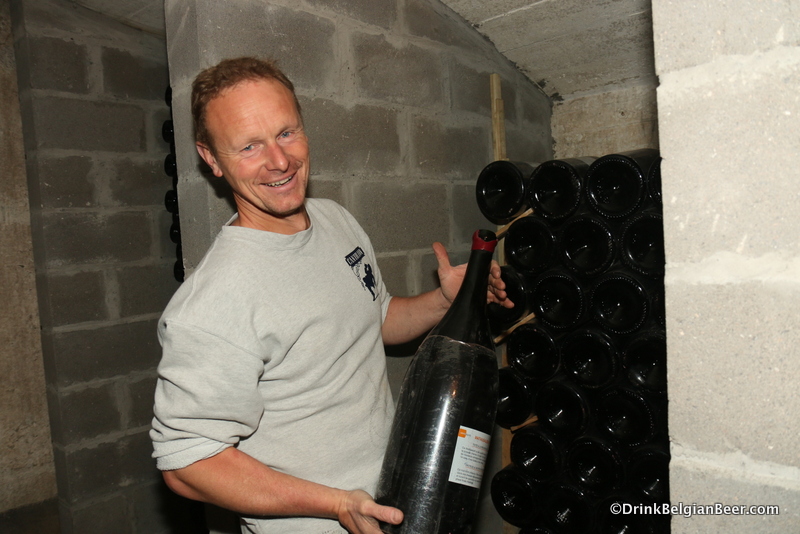
My visits on 7 February and 28 November 2017 were relatively quiet ones, with just a few other beer journalists and lambic lovers on hand. While Cantillon open its doors at 6:30 am for its public brew days, and starts brewing at 7 am, brewing normally begins around 8 am on other days. Which is good, because every hour of sleep is precious. Especially during a beer trip to Belgium.
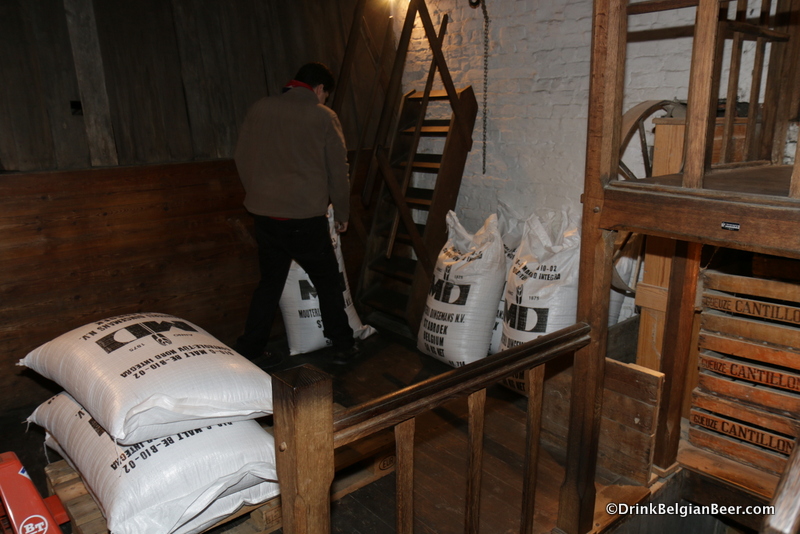
The first step of the brewing process is the crushing of the grains used to make lambic, malted barley and unmalted wheat. Brasserie Cantillon’s lambic recipe uses 65% malted barley, from Maltery Dingemans of Stabroek, near Antwerp, and 35% unmalted (raw) wheat. These grains are stored on the top floor of the brewery. The bags of grain are opened, and the desired quantities are weighed and then poured into a trapdoor hole in the floor which connects to a wooden conveyer leading to the grain crusher (grain mill) below. Once crushed, the grains are fed into the mash tun, another floor below. About 450 kilograms (990 U.S. pounds) of wheat and 850 kg (1870 U.S. pounds) of barley are used in each batch.
Note: as far as floor numbers, while we in the USA often refer to the ground level floor the “first floor,” it is very common in Europe to call the ground level floor “floor 0” and what we would call the second floor would be called the first floor. I use the USA way of numbering floors in this article.

As Cantillon’s 19th century mash tun has no source of internal heat, hot water must be pumped into it to mash the grains. The water comes from a large tank on the second floor, the same floor as the boiling (brewing) kettles. The mechanical arms inside the mash tun spin around in a circle to agitate and thicken the barley and wheat, and mix these grains with hot water. This releases starches (complex carbohydrates) and proteins contained in the grains. Later in the process, naturally occurring airborne wild yeasts (such as Brettanomyces Bruxellensis and Brettanomyces Lambicus) and bacteria will eat these starches, turning them into alcohol.
Wort, a tea-like substance that is the base for what will become lambic beer, is produced by this mashing of the grains. Cantillon uses the turbid mash method, as do several other Belgian lambic breweries. This old method produces a wort with a milky, murky appearance, hence the name turbid.
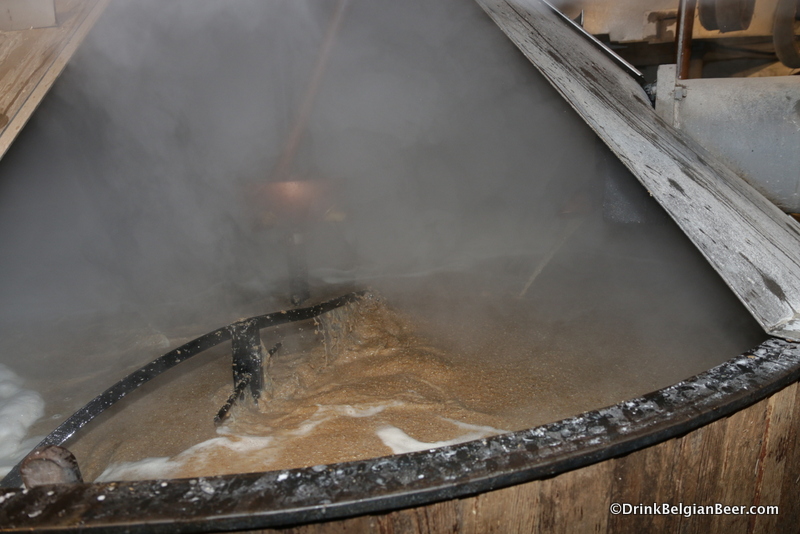
One reason that Cantillon and the other lambic breweries only brew during winter is because the yeasts and bacteria that work so well for producing great lambic beers work best when the overnight low is between about 25 and 40 degrees Fahrenheit (from -4 to +4 degrees Celsius.) These figures are just a range, and the exact ideal temperature is a matter of opinion. “I look for not only how cold it will be, but how windy,” Van Roy remarked during one of my visits this year. “The more wind, the better the inoculation of the wort can be,” he added.

A second reason for only brewing in winter was explained by Van Roy: “There are more yeasts, and many more bacteria, active during warm nights, and to avoid bacteria development during the fermentation, we have to brew when the yeast activity is more important than the bacteria activity. One of the reasons why bacteria are more prevalent in warm weather is the presence of insects. Insects are an important trigger for bacteria being active, and…there are no insects active in the winter time.”
Lambic brewing is really a matter of having the right yeasts and bacteria to inoculate the wort, not just any yeasts or bacteria.
Additionally, it can also be too cold for lambic brewing. The brettanomyces yeast strains that are desired for producing lambic are not as active below about 25 degrees Fahrenheit. I had one lambic brewer tell me that he has brewed when the overnight low was down to -5 or -6 degrees Celsius (21 to 23 degrees Fahrenheit) and that he dared not brew when colder than that, as little inoculation would take place.


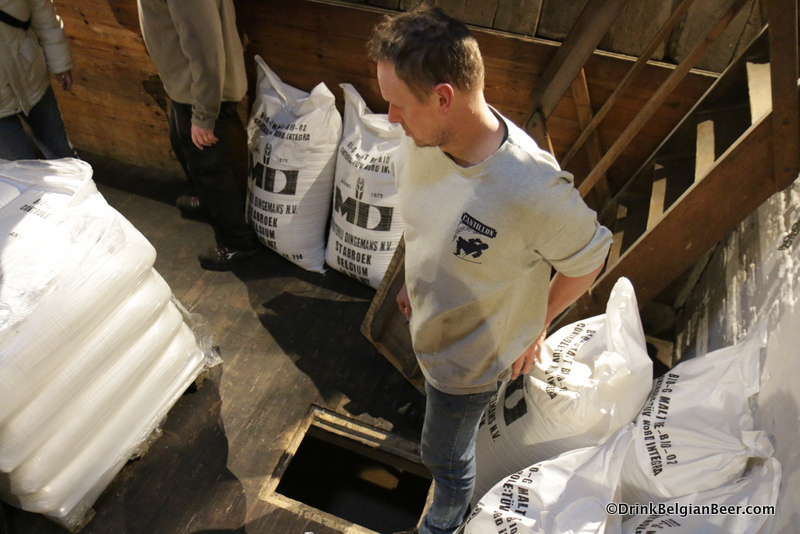
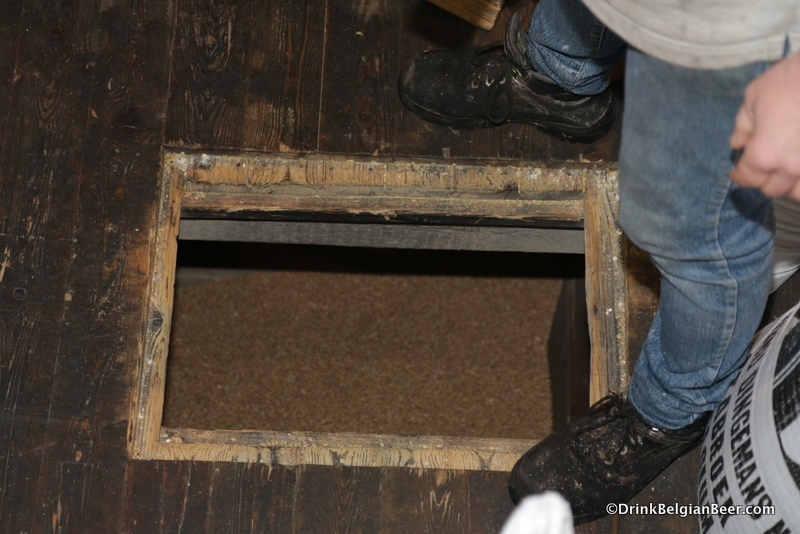






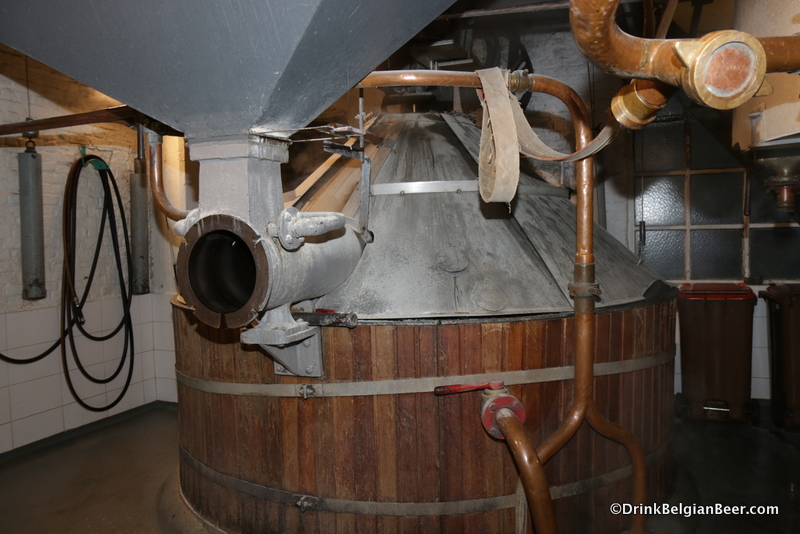
CONTINUED ON NEXT PAGE-more about the mashing of the grains, and a taste of wort.
If you like this website, please like our Facebook page
And our Instagram page here.
and our Twitter page <

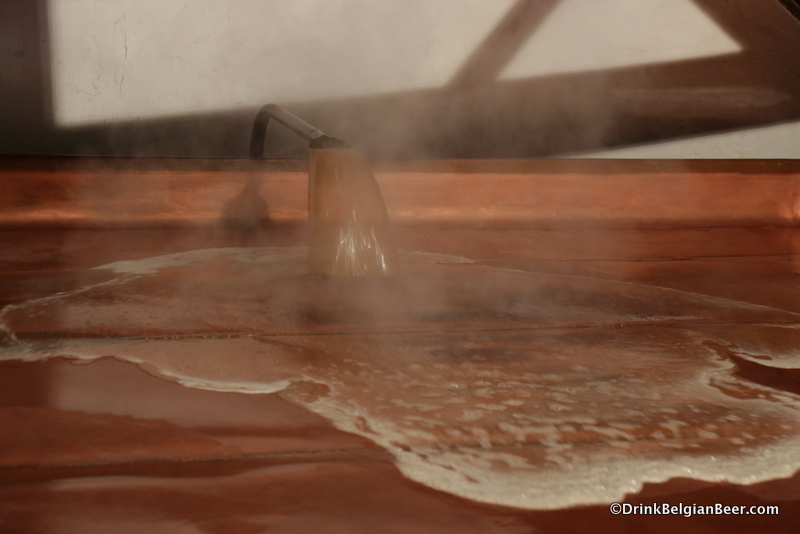
Leave a Reply